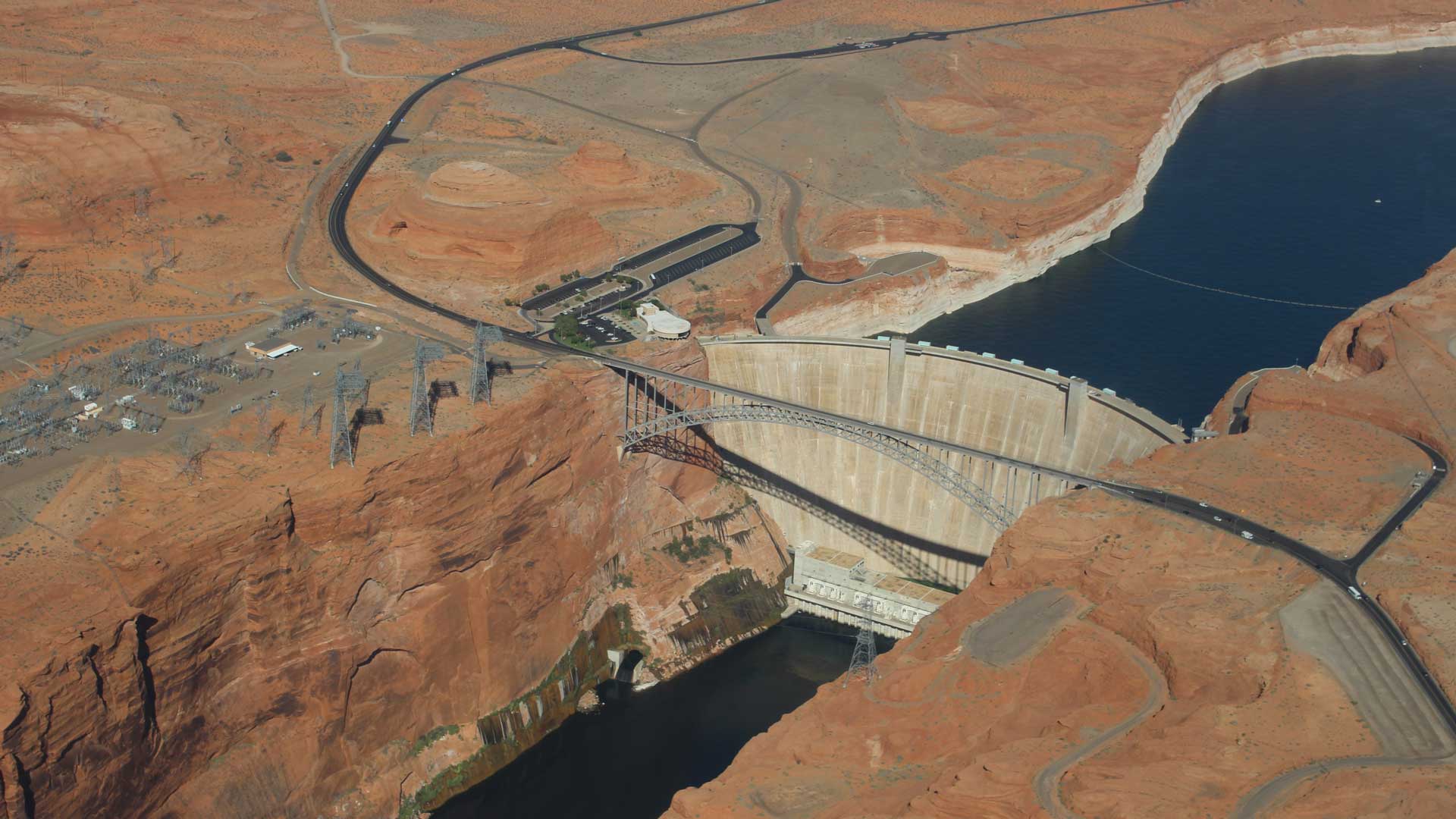 Glen Canyon Dam holds back Lake Powell, the nation's second-largest reservoir on the Colorado River. The lake is currently at 28% of its capacity.
Glen Canyon Dam holds back Lake Powell, the nation's second-largest reservoir on the Colorado River. The lake is currently at 28% of its capacity.
States in the Upper Colorado River Basin are not ready to commit to federal water conservation targets but are seeking to revive a conservation program first launched in 2014.
In a letter to the Bureau of Reclamation, officials from Colorado, Utah, Wyoming, and New Mexico say they are already dealing with water shortages due to ongoing dry conditions along the Colorado River, which serves as a drinking water source for 40 million people in the southwest. A reauthorization of the 2014 System Conservation Pilot Program (SCPP) is one prong of the states’ newly rolled out Five-Point Plan.
Senators John Hickenlooper, of Colorado, and John Barrasso, of Wyoming, are expected to introduce the bill to the Senate Energy and Natural Resources Committee at a meeting Thursday.
“This is the first step in a collaborative plan to restore the Colorado River. We need more programs where water users are empowered to conserve water where and when it makes sense for them,” Hickenlooper said in a statement. “If we just sit around suing each other over a hundred-year-old agreement, we’ll watch the river run dry.”
The Upper Basin letter argues Congress should reauthorize the SCPP. For four years the program paid farmers in Upper Basin states to restrict their use in order to create “system water,” or simply conserved water that would flow to Lake Powell. The program demonstrated that farmers would participate in programs where they’re paid to fallow their fields.
But the program left some thorny questions unanswered, about how to fund such a program on a broad scale, how to ensure the conserved water flowed to the struggling reservoir it was meant to boost, and how to avoid rural communities from being hurt economically when farmers were paid not to grow crops.
At a Wednesday board meeting, Colorado Water Conservation Board director Becky Mitchell said the Upper Basin’s planning efforts hinge on how Arizona, California, and Nevada respond to the federal government’s recent charge of needing two to four million acre-feet of conservation in 2023 to keep Lakes Powell and Mead from declining to critically low levels.
Upper Basin leaders have chafed at the idea of committing to specific volumes of water to be conserved within their boundaries.
“There is recognition that while we must find basin-wide solutions, the options in the Upper Basin are limited,” Mitchell said at the meeting, noting that the Upper Basin states do not benefit from having a large reservoir like Lake Mead from which to draw on in dry times.
The letter also notes that the Upper Basin’s water uses are much smaller than those in the Lower Basin, making the pitch that any benefits from conserving in those states might not aid the system as a whole.
“The effectiveness will be limited, dependent on what comes out of the Lower Basin and their plan moving forward. So we’re looking forward to seeing that,” Mitchell said.
The Colorado River’s biggest reservoirs are at record lows. The deadline for states to commit to the federal government’s conservation target is in mid-August.
This story is part of ongoing coverage of the Colorado River, produced by KUNC and supported by the Walton Family Foundation.

By submitting your comments, you hereby give AZPM the right to post your comments and potentially use them in any other form of media operated by this institution.